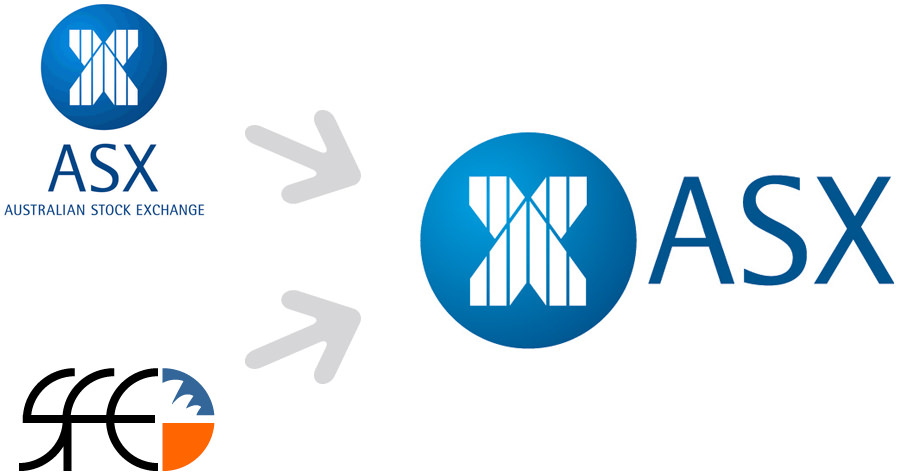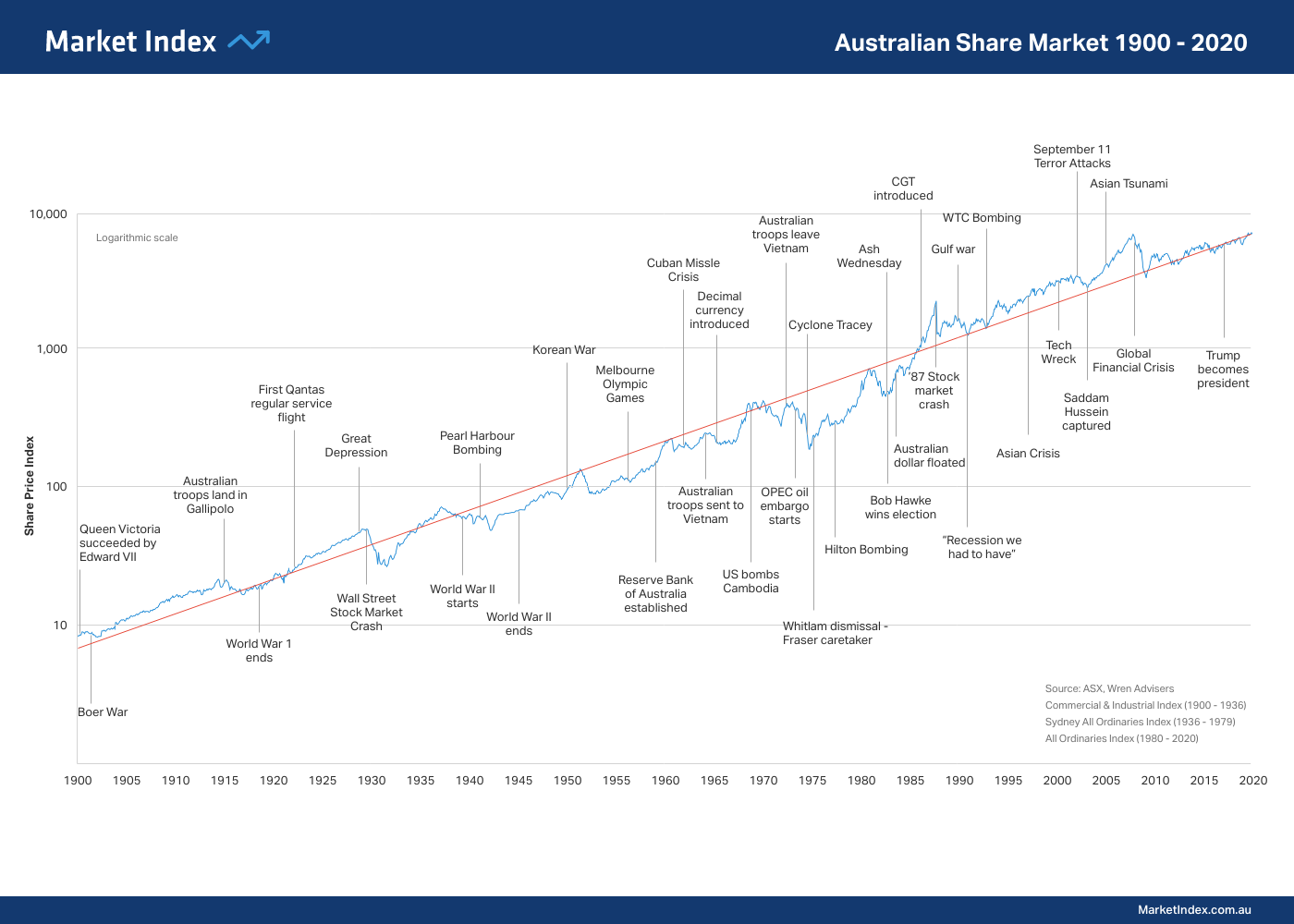History of the ASX
The Australian stock market dates back over 150 years when the first regional market was established in Melbourne.
As at 2020, the Australian stock market has grown to become the 13th largest share market in the world with a domestic equity market of circa $2.47 trillion AUDWorld Bank.
Domestic Market Capitalisation (2020)
| Exchange | Market Cap (Bn USD) | |
|---|---|---|
| 1 | United States | 40,719 |
| 2 | China | 12,214 |
| 3 | Japan | 6,718 |
| 4 | Hong Kong | 6,130 |
| 5 | United Kingdom2014 | 3,570 |
| 6 | Canada | 2,641 |
| 7 | India | 2,595 |
| 8 | Saudi Arabia | 2,429 |
| 9 | France2018 | 2,365 |
| 10 | Germany | 2,284 |
| 11 | Korea | 2,176 |
| 12 | Switzerland | 2,001 |
| 13 | Australia | 1,720 |
| 14 | Iran | 1,218 |
| 15 | Netherlands | 1,100 |
Milestones of the Australian Share Market
Australia's first stock exchange was established in Melbourne in 1861. Over the next few decades, additional regional exchanges were established in Sydney (1871), Hobart (1882), Brisbane (1884), Adelaide (1887) and Perth (1889).
All exchanges traded independently of each other until 1937 when the Australian Associated Stock Exchanges (AASE) was established, bringing with it uniformed listing and commission rules.
The following year, in 1938, the first official share price index was published.
1979 - ALL ORDINARIES INDEX IS CREATED
For over 50 years there was no index to represent the Australian share market as a whole, but instead only individual regional indices.
The All Ordinaries Index (known as the "All Ords") replaced the regional indices to become Australia's first official share price index and primary institutional benchmark for the Australian share market. It was used from January 1980 until April 2000.
The starting base value for the All Ordinaries was set at 500 on 31 December 1979, with the first trading day being 2 January 1980.
1987 - AUSTRALIAN STOCK EXCHANGE IS FORMED

The Australian Stock Exchange was formed in 1987 when the Australian government drafted legislation that amalgamated the six independent state-based stock exchanges.
On 2 September 1999, the Australian Stock Exchange (ASX) announced that the S&P suite of indices (in particular the S&P/ASX 200) would become the new institutional benchmark for the Australian share market. This move was intended to change the role of Australia's indices from being used as a share price measuring tool to a benchmark for portfolio returns.
"The original All Ordinaries Index was created twenty years ago as a simple way of measuring market movement. It was not designed as an instrument against which to measure portfolio or individual stock performance".
Source: 2 Sept 1999 ASX Announcement
2000 - TRANSITION FROM ALL ORDINARIES TO S&P/ASX 200
The S&P/ASX 200 was established in April 2000 and replaced the All Ordinaries.
The transition occurred when Standard & Poor's (S&P) assumed responsibility for Australia's suite of indices, bringing the Australian share market into the global spotlight. Although considered one of the "Big Three" credit rating agencies (along with Moody's Investors Service and Fitch Ratings), S&P is most recognised for its global suite of indices. Widely regarded as the benchmark for equity investments, its indices are noted for their highly liquid and tradable constituents, encouraging investment by even the largest institutional investors.
2006 - MERGER & RENAMING
In 2006 the Australian Stock Exchange merged with the Sydney Futures Exchange (SFE) and became known as the Australian Securities Exchange (ASX).

Timeline of Milestones
1829
Matthew Gregson receives permission from the Bank of New South Wales to trade in its shares.
First share list was published by William Barton, father of Australia’s first Prime Minister Edmund Barton.
1835
1861
Australia's first stock exchange is established in Melbourne.
Australia's second stock exchange is established in Sydney.
1871
1880's
Four regional stock exchanges are established - Hobart (1882), Brisbane (1884), Adelaide (1887) and Perth (1889).
Australian Associated Stock Exchanges (AASE) is established with representatives from all regional exchanges.
Uniformed listing rules are created.
1937
1938
Publication of the first share price index.
Sydney Futures Exchange (SFE) commences trading as the Sydney Greasy Wool Futures Exchange (SGWFE).
1960
1969
Mining Boom! Poseidon NL shares rise from $0.80 to $280 in 4.5 months.
National listing for all securities is introduced.
1972
1976
The Australian Options Market is established.
All regional indices are replaced.
The All Ordinaries index is created with a base date of 31 December 1979.
1979
1987
The Australian Securities Exchange (ASX) is formed on 1 April 1987.
Stock Exchange Automated Trading System (SEATS) in launched, moving transactions to digital.
1987
1987
Global crash – the All Ordinaries index records its largest one-day loss, falling by 516 points (25%) on 20 October 1987.
The All Ordinaries index records its highest one-day points gain, rising 144 points (6%) on 29 October 1997.
1997
2000
2000 Standard & Poor's takes over from the ASX.
The S&P/ASX 200 replaces the All Ordinaries index as the primary institutional benchmark index for the Australian market.
Introduction of the Global Industry Classification Standard (GICS) for the Australian market.
2001
2001
Standard & Poor's take over index calculation from the ASX.
2002
2008
Global Financial Crisis (GFC) - ASX falls 54% over 16 months.
Additional Reading
All Ordinaries since 1982 - PDF image with major events overlaid
Index Calculation Methodology - for all major Australian indices (by Market Index)
